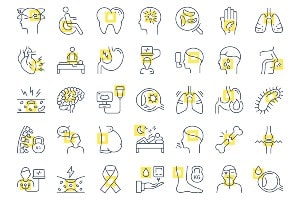About Cystoscopy and Ureteroscopy

Learn about the disease, illness and/or condition Cystoscopy and Ureteroscopy including: symptoms, causes, treatments, contraindications and conditions at ClusterMed.info.
Cystoscopy and Ureteroscopy

| Cystoscopy and Ureteroscopy |
|---|
Cystoscopy and Ureteroscopy InformationHope through researchThe National Institute of Diabetes and Digestive and Kidney Diseases (NIDDK) has many research programs aimed at understanding kidney and urologic disorders, including urinary stones, enlarged prostate, urinary incontinence, and kidney failure. The NIDDK sponsors researchers developing advanced diagnostic equipment, such as cystoscopes that can examine bladder tissue at the microscopic level. This technology may in some cases eliminate the need for biopsy.Participants in clinical trials can play a more active role in their own health care, gain access to new research treatments before they are widely available, and help others by contributing to medical research. For information about current studies, visit www.ClinicalTrials.gov. Points to Remember
How is a cystoscopy or ureteroscopy performed?After a local anesthetic is used to take away sensation in the ureter, the doctor gently inserts the tip of the cystoscope or ureteroscope into the urethra and slowly glides it up into the bladder. A sterile liquid -- water or salt water, called saline -- flows through the scope to slowly fill the bladder and stretch it so the doctor has a better view of the bladder wall.As the bladder is filled with liquid, patients feel some discomfort and the urge to urinate. The doctor may then release some of the fluid, or the patient may empty the bladder as soon as the examination is over.The time from insertion of the scope to removal may be only a few minutes, or it may be longer if the doctor finds a stone and decides to treat it. Taking a biopsy -- a small tissue sample for examination with a microscope -- will also make the procedure last longer. In most cases, the entire examination, including preparation, takes 15 to 30 minutes. What are the preparations for a cystoscopy or ureteroscopy?People scheduled for a cystoscopy or ureteroscopy should ask their doctor about any special instructions. In most cases, for cystoscopy, people will be able to eat normally in the hours before the test. For ureteroscopy, people may be told not to eat before the test.Because any medical procedure has a small risk of injury, patients must sign a consent form before the test. They should not hesitate to ask their doctor about any concerns they might have.Patients may be asked to give a urine sample before the test to check for infection. They should avoid urinating for an hour before this part of the test.Usually, patients lie on their back with knees raised and apart. A nurse or technician cleans the area around the urethral opening and applies a local anesthetic so the patient will not experience any discomfort during the test.People having a ureteroscopy may receive a spinal or general anesthetic. They should arrange for a ride home after the test. What happens after a cystoscopy or ureteroscopy?Patients may have a mild burning feeling when they urinate, and they may see small amounts of blood in their urine. These problems should not last more than 24 hours. Patients should tell their doctor if bleeding or pain is severe or if problems last more than a day.To relieve discomfort, patients should drink two 8-ounce glasses of water each hour for 2 hours after the procedure. They may ask their doctor if they can take a warm bath to relieve the burning feeling. If not, they may be able to hold a warm, damp washcloth over the urethral opening.The doctor may prescribe an antibiotic to take for 1 or 2 days to prevent an infection. Any signs of infection -- including severe pain, chills, or fever -- should be reported to a doctor. What is a cystoscopy?A cystoscopy is an examination of the inside of the bladder and urethra, the tube that carries urine from the bladder to the outside of the body. In men, the urethra is the tube that runs through the penis. The doctor performing the examination uses a cystoscope -- a long, thin instrument with an eyepiece on the external end and a tiny lens and a light on the end that is inserted into the bladder. The doctor inserts the cystoscope into the patient's urethra, and the small lens magnifies the inner lining of the urethra and bladder, allowing the doctor to see inside the hollow bladder. Many cystoscopes have extra channels within the sheath to insert other small instruments that can be used to treat or diagnose urinary problems.Picture of male and female urinary tracts.A doctor may perform a cystoscopy to find the cause of many urinary conditions, including
What is a ureteroscopy?A ureteroscopy is an examination or procedure using a ureteroscope. A ureteroscope, like a cystoscope, is an instrument for examining the inside of the urinary tract. A ureteroscope is longer and thinner than a cystoscope and is used to see beyond the bladder into the ureters, the tubes that carry urine from the kidneys to the bladder. Some ureteroscopes are flexible like a thin, long straw. Others are more rigid and firm. Through the ureteroscope, the doctor can see a stone in the ureter and then remove it with a small basket at the end of a wire inserted through an extra channel in the ureteroscope. Another way to treat a stone through a ureteroscope is to extend a flexible fiber through the scope up to the stone and then, with a laser beam shone through the fiber, break the stone into smaller pieces that can then pass out of the body in the urine. How and what the doctor will do is determined by the location, size, and composition of the stone.Picture of rigid cystoscope (left) and semirigid ureteroscope (right).The reasons for a ureteroscopy include the following conditions:
Where can I find more information about cystoscopy and ureteroscopy?American Urological Association Foundation1000 Corporate BoulevardLinthicum, MD 21090Phone: 1-866-RING-AUA (1-866-746-4282) or 410-689-3700Fax: 410â689â3800Email: [email protected]Internet: www.urologyhealth.orgInterstitial Cystitis Association110 North Washington Street Suite 340Rockville, MD 20850Phone: 1-800-HELP-ICA (1-800-435-7422) or 301-610-5300Fax: 301-610-5308Email: [email protected]Internet: www.ichelp.org |
More Diseases
A | B | C | D | E | F | G | H | I | J | K | L | M | N | O | P | Q | R | S | T | U | V | W | X | Y | Z
Diseases & Illnesses Definitions Of The Day
- Noncancerous Colloid Thyroid Nodule (Thyroid Nodules) ‐ How are thyroid nodules diagnosed?, Introduction to thyroid nodules …
- Skin, Laser Resurfacing (Laser Resurfacing) ‐ CO2 Laser Resurfacing, Complications of Laser Skin Resurfacing …
- Malignant Fibrous Histiocytoma (Bone Cancer Overview) ‐ Are there any treatments or medications that relieve bone cancer pain? …
- Double Vision ‐ Is it possible to prevent double vision?, What are the symptoms and signs of double vision? …
- Ageusia (Taste Disorders) ‐ Are taste disorders serious?, Can taste disorders be treated? …
- Autism Screening and Diagnosis ‐
- Alpha-fetoprotein Blood Test ‐ In which situations are high blood (serum) levels of AFP used as a tumor marker? …
- Polymyalgia Rheumatica ‐ How do health care professionals make a diagnosis of polymyalgia rheumatica? …
- Stump Appendicitis (Appendicitis) ‐ Appendicitis definition and facts, Are there long-term consequences of appendectomy? …
- Gonorrhea (Gonorrhea In Women) ‐ Gonorrhea facts, How is gonorrhea diagnosed?, What are sexually transmitted diseases (STDs)? …